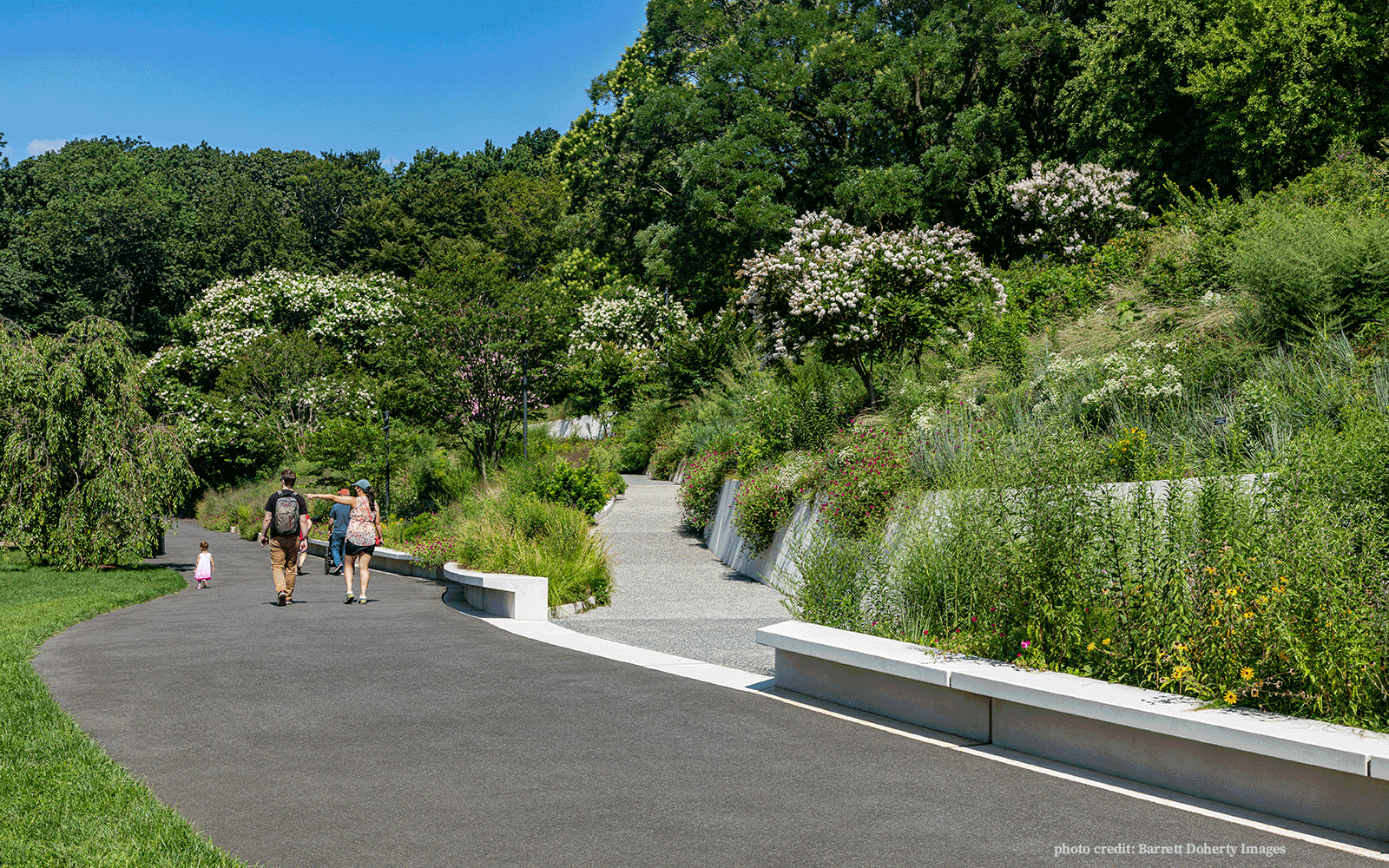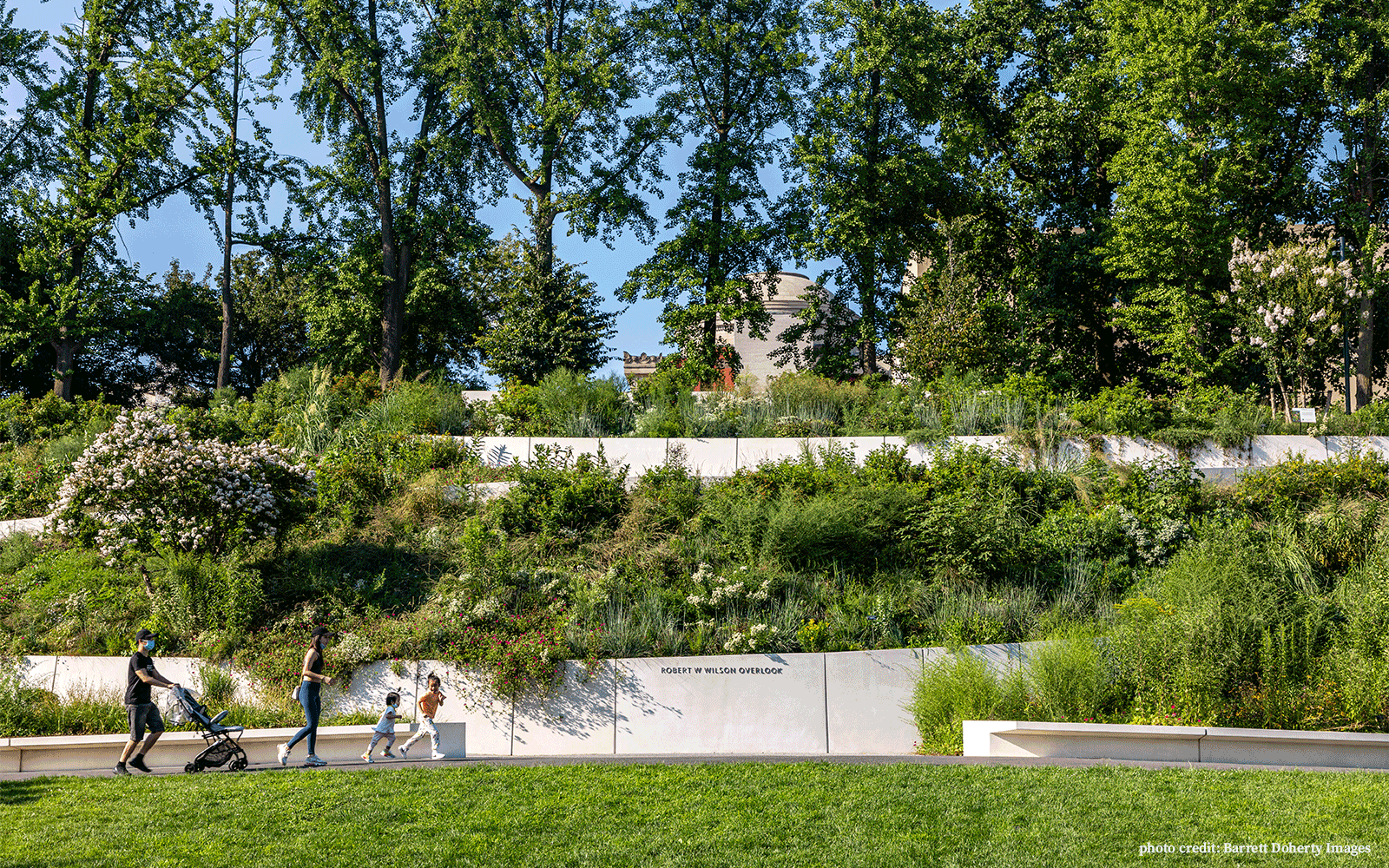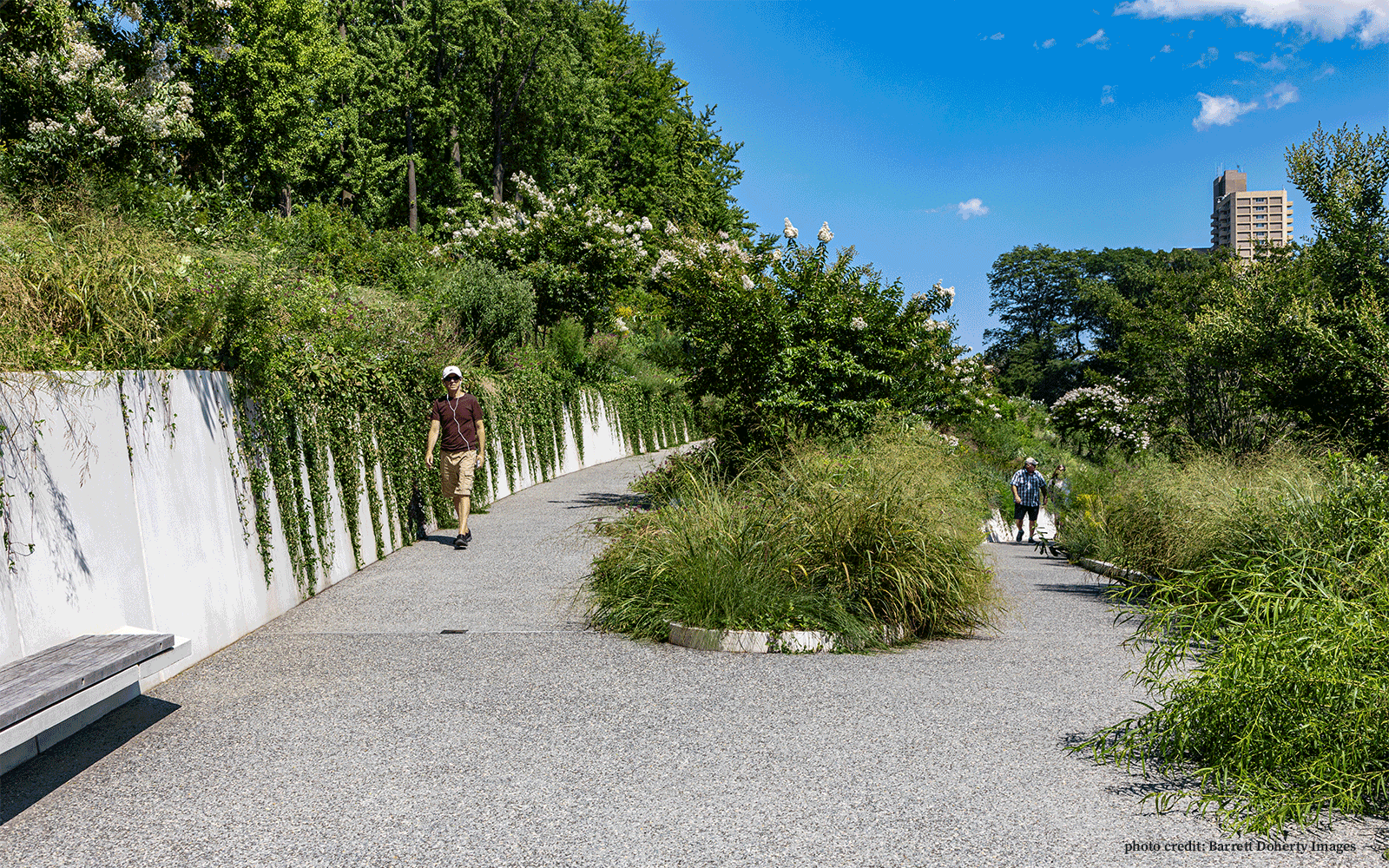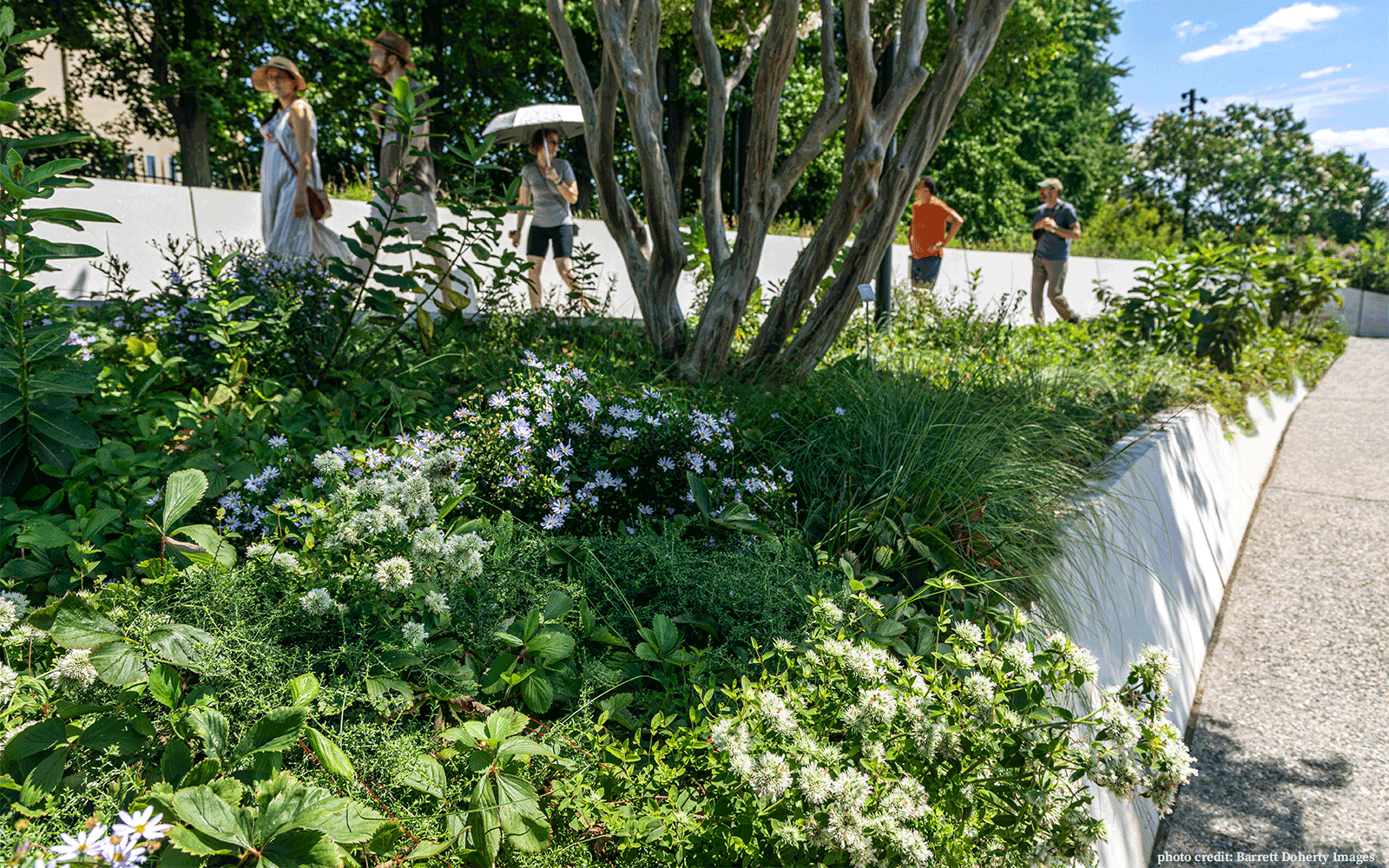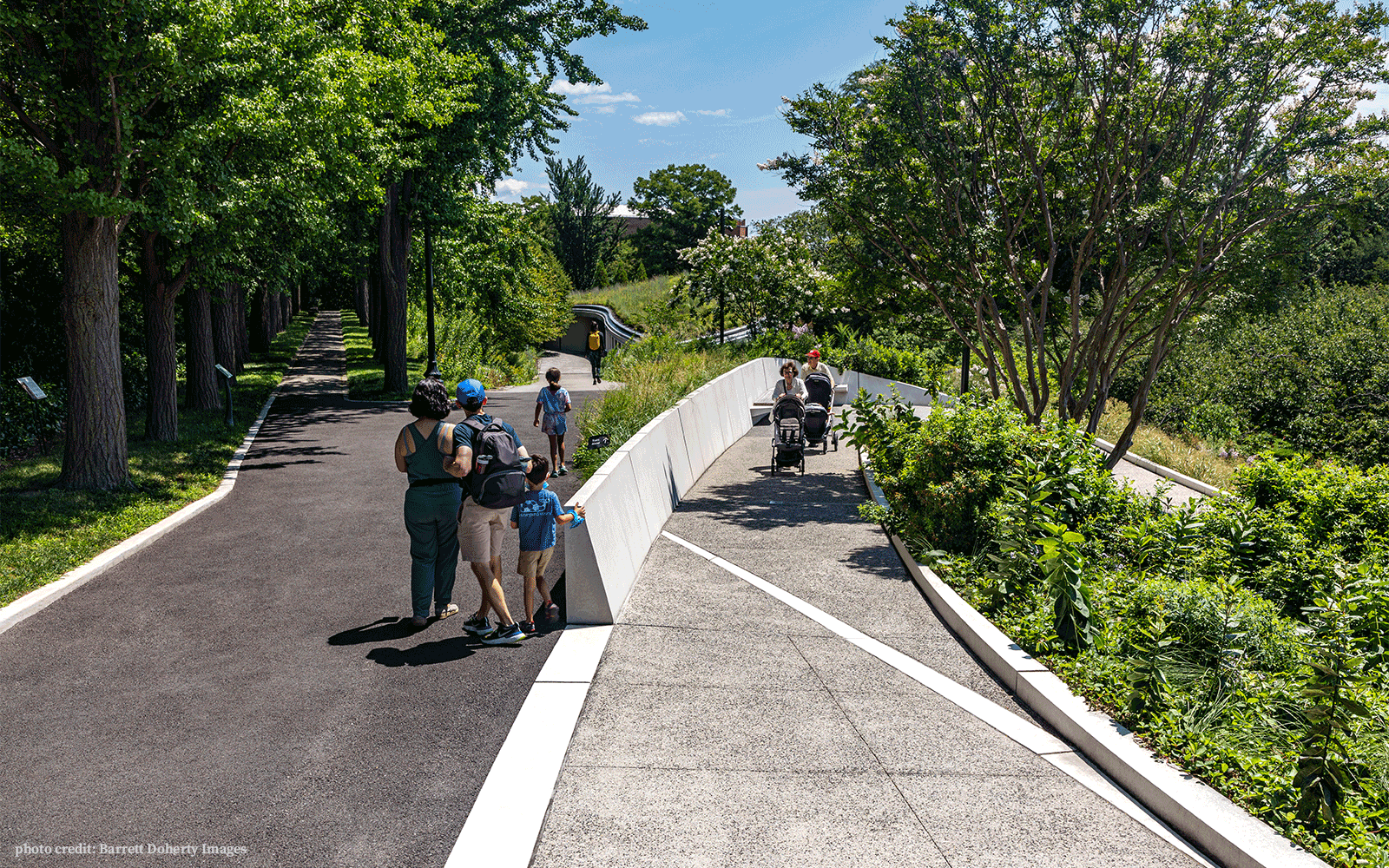The Robert W. Wilson Overlook at Brooklyn Botanic Garden
- Services Provided
- Technical Design Consulting
Landscape Architect of Record
Construction Planning and Scheduling
Construction Administration - Project Budget
- $5 Million
- Project Duration
- 2017-2020
- Project Team
- WEISS/MANFREDI Architects
SiteWorks Landscape Architecture
Wolf Landscape Architecture, LLC
Thornton Thomassetti, Inc.
Office of Visual Interaction, Inc. - Client
- Brooklyn Botanic Garden
- Awards
- 2022 THE PLAN, Completed Landscape 2022 Honor Award, Boston Society of Landscape Architects
As the Landscape Architect of Record, SiteWorks brought its technical acumen and construction management expertise to the design of this donor-funded 1-acre garden renovation of the Brooklyn Botanic Garden’s Overlook.
In a thoughtful collaboration with Weiss Manfredi and Wolf Landscape Architecture, SiteWorks completed and coordinated the construction documentation to expand the Garden’s botanical collection and bring functional reverence to an overgrown slope fronting one of the most notable spaces in the garden. The introduction of crape myrtle trees sought to complement the design of a universally accessible pathway that provided connection and a continuous circuit between the Ginko Esplanade and the Cherry Esplanade.
Sinuous walls move across the landscape and were carefully studied – along with the topography with which they are intimately linked – in multiple iterations. SiteWorks challenged the initial budgetary constraints, ultimately convincing the team to pursue a system of precast concrete wall segments. This material change simultaneously streamlined the installation process and lessened the severity of the proposed slopes, which facilitated a more robust and viable planting strategy.
Utilizing best practices, SiteWorks successfully advocated for re-use of existing soils amended on-site to respond to slope conditions and plant needs. This approach saved the client money, time, and eliminated the need to use trucks to haul material off-site and import new soil.

